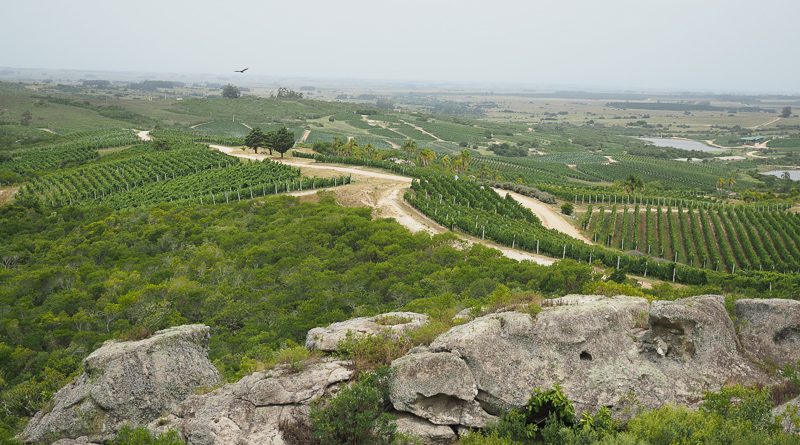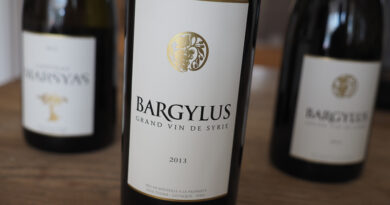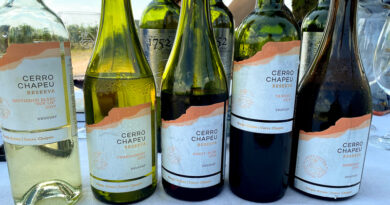In Uruguay: Bodega Garzón
Garzón is a spectacular fine wine project that has had a huge impact on the Uruguayan wine scene, and has helped the development of the Maldonado wine region in the east of the country. Jamie Goode visits and is impressed.
Website: https://bodegagarzon.com/en/
It must rankle a little with the Argentines that when one of their richest individuals, Alejandro Bulgheroni, decides to start his first wine project from scratch, he should choose to do it in neighbouring Uruguay, close to Punta del Este on the east coast.
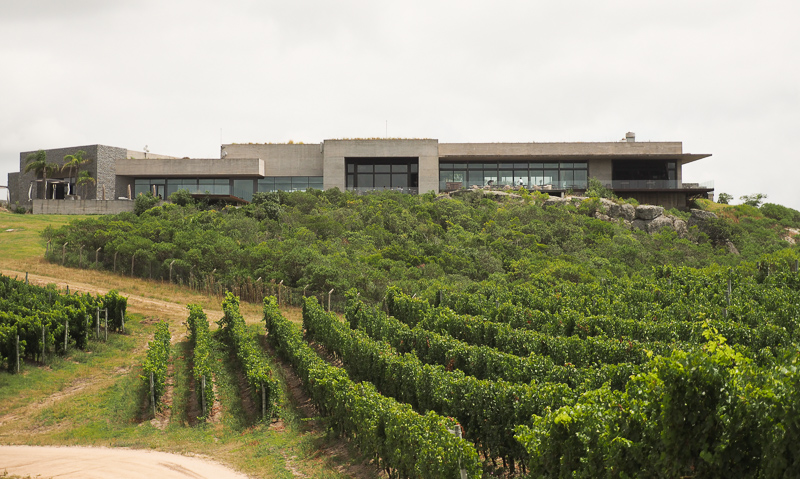
This isn’t Bulgheroni’s first foray into wine: he made a fortune, primarily from his petrol business, and has invested in several wineries already. But this was the first time he started a wine project of his own, and he’s done it in style.
Garzón was the first visit on my Uruguay trip, and I wasn’t prepared for what I found here. This is a really impressive, carefully thought-out project. I visited with managing director, Christian Wylie, winemaker Germán Bruzzone, marketing director Nicolás Bonino and viticulturist Eduardo Félix.
Here’s a short film of the visit:
Punta del Este is a popular holiday destination, but there wasn’t a wine region here. Most of the vineyards in Uruguay are close to Montevideo, with Canelones the largest wine region. There, it is flat and the soils are quite fertile. Garzón was the first winery here in this new terroir of Maldonado. Now there are fourteen projects in the region.
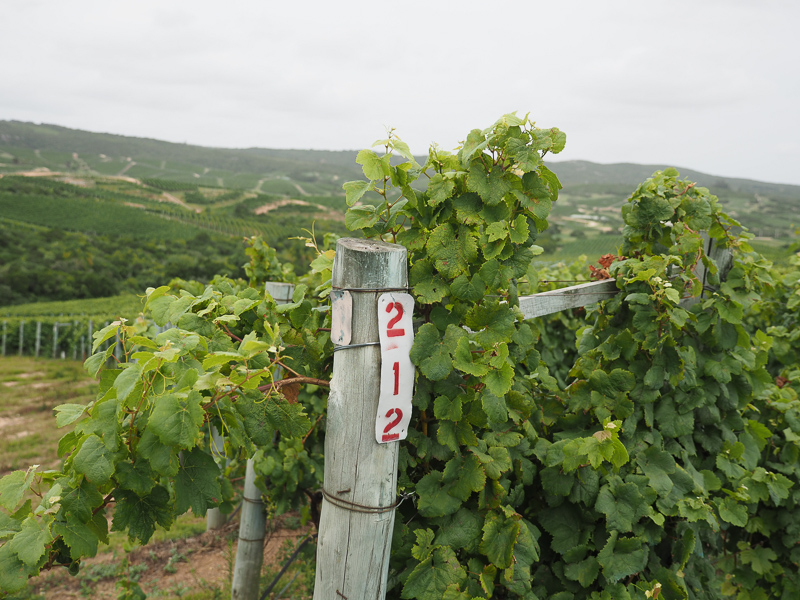
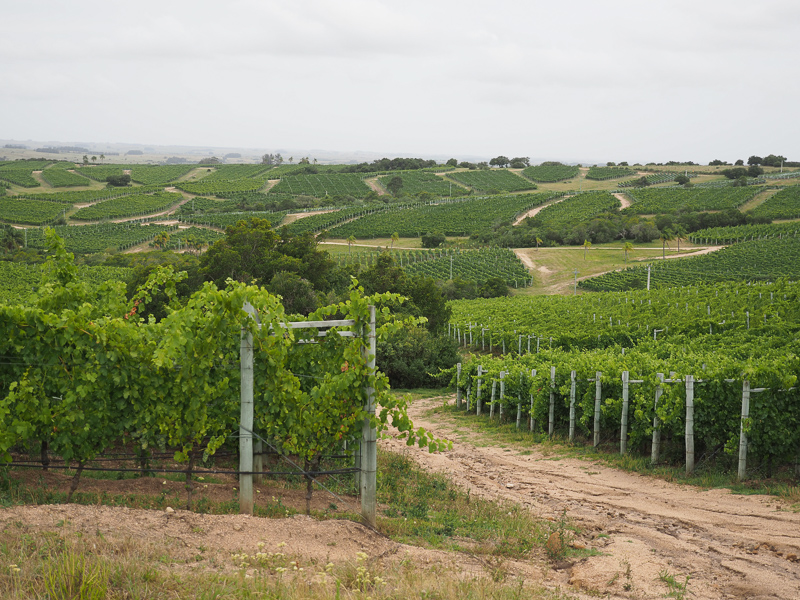
Bulgheroni didn’t take the obvious route of starting small and seeing how things went. There was no experience working with the distinctive soils here, but he went big and planted 240 hectares in 2008. The focus is on making only premium wines, making this one of the world’s largest fine wine estate, if not the largest. First vintage was 2010 – a small one.
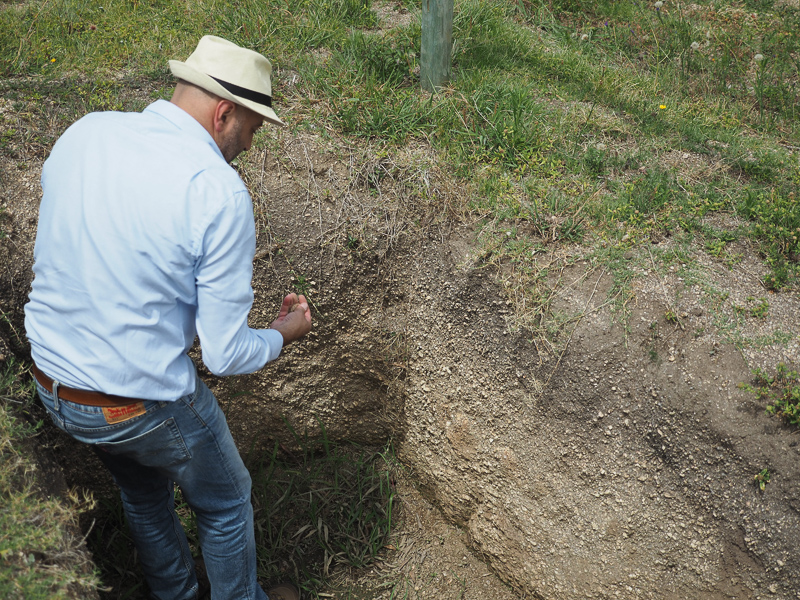
Here in Maldonado we are 15 km from the Atlantic. Soils are sandy granitic, with around 60% sand and 40% decomposed granite of a local type known as balasto. There are also some gentle hills, which is unusual for such a flat country. Uruguay doesn’t have a lot of hills: its highest point is 500 m. The altitude at Garzón ranges from 70-170 m. There is also quite a bit of wind. ‘We have started to understand that this is one of the best places in Uruguay for making wine,’ says Bruzzone. ‘Here you can wait until the precise moment of ripeness, and then you can make a different style of wines.’ In the regions closer to Montevideo he says that people used to make wines with grapes that didn’t achieve perfect ripeness, because of the water and the fertility of the soils. ‘But now many agronomists are managing the canopies better,’ he adds. In Maldonado, getting balance comes more naturally because of the drainage and poorer fertility of the soils.
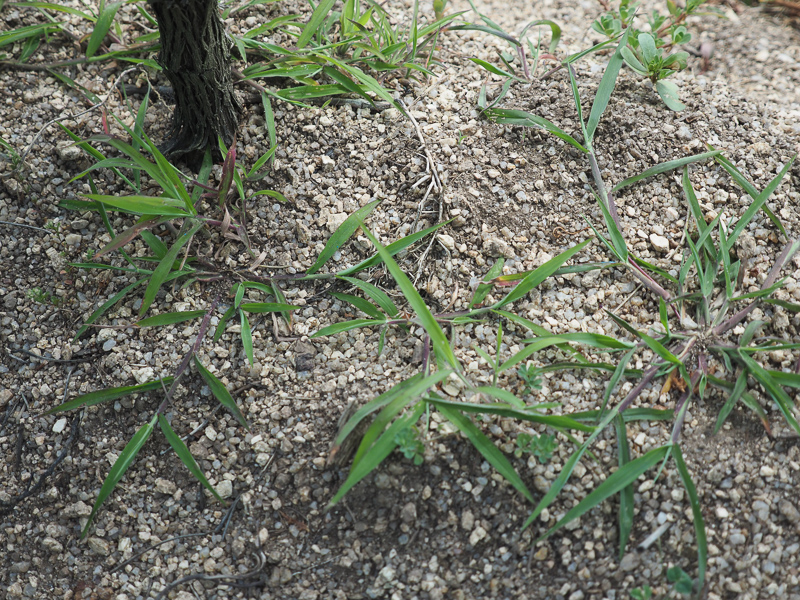
The main varieties at Garzón are Tannat (there are 64 hectares) and Albariño (35 hectares). Félix planted the first hectare of Albariño in the country at his previous gig, so he’s a real believer in it. 10 years ago no one had heard of the variety in Uruguay, and so with 35 hectares, Garzón went big.
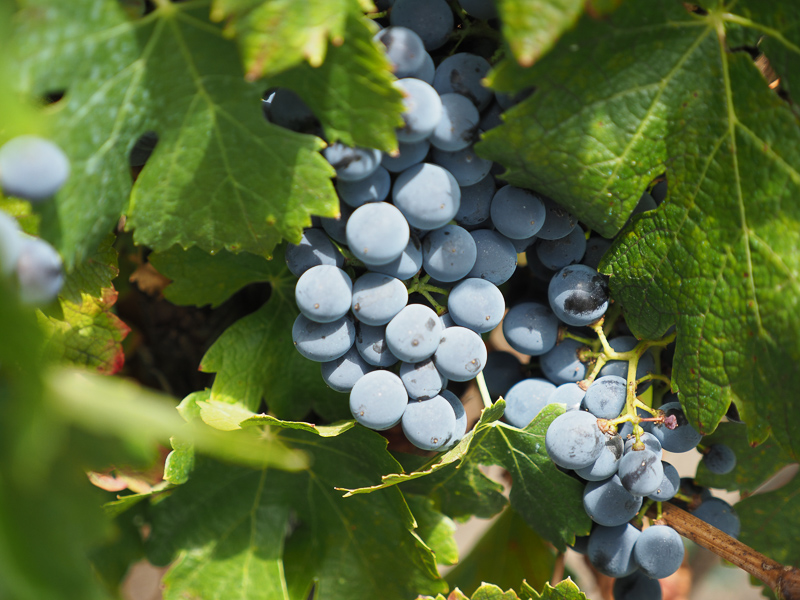
Previously, this area was wild forest. Bulgheroni initially bought land in the region and planted olives (4000 hectares in 2000). Then he established his country house on the property, and built a private golf course around his house. [It is part of a private club called the Garzon club, which allows members to play on the course and even to make some wine.] He also bought the property that is now Garzón because of the hills: he has an interest in clean energy and wanted to establish a wind farm here. But his wife didn’t like windmills in her view, so he had to think of another use for the land, and wine seemed like a good option.
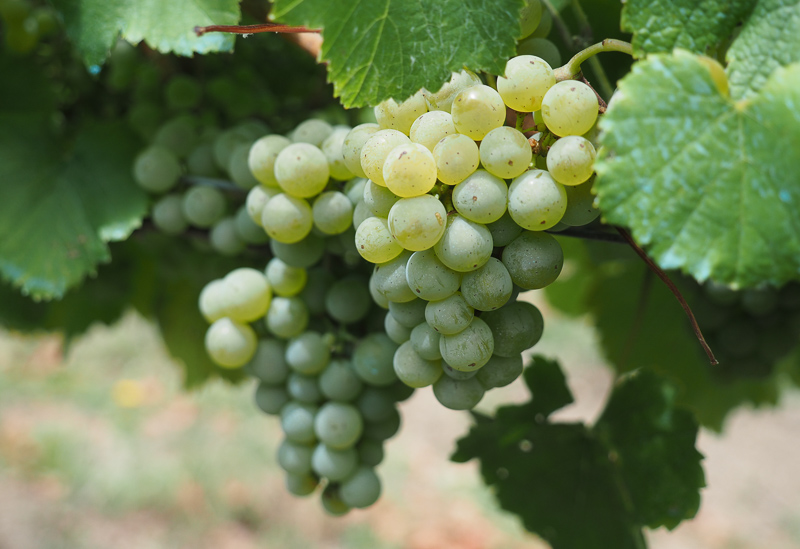
He decided he’d need a consultant, and had three in mind. He talked with three very well known ones, and decided in the end to work with Alberto Antonini. He invited him to visit. In the beginning Antonini thought they’d plant just a bit and see how it went, but Alejandro wanted to go in big from the start.
In the end, they took a parcel approach, and there are 1200 individual plots of vines at Garzón, with 70% planted with red grapes and 30% with white. Some plots are tiny, and everything is hand picked. Planting decisions were made after mapping soil and topography. The white grapes tend to be planted facing south (cooler, this is the southern hemisphere). Everything has to be hand picked because of the contours.
They focused on Tannat because it is the flagship of Uruguay. Antonini thought Albariño would work well here, but there were only 2 hectares in the country. Despite this, they went big on it, and have since been proved right. There are also 15 hectares of Cabernet Franc, and 16.4 hectares of Marselan, as well as a range of other varieties. There are some experimental grapes like Vermentino and Riesling with less than a hectare.
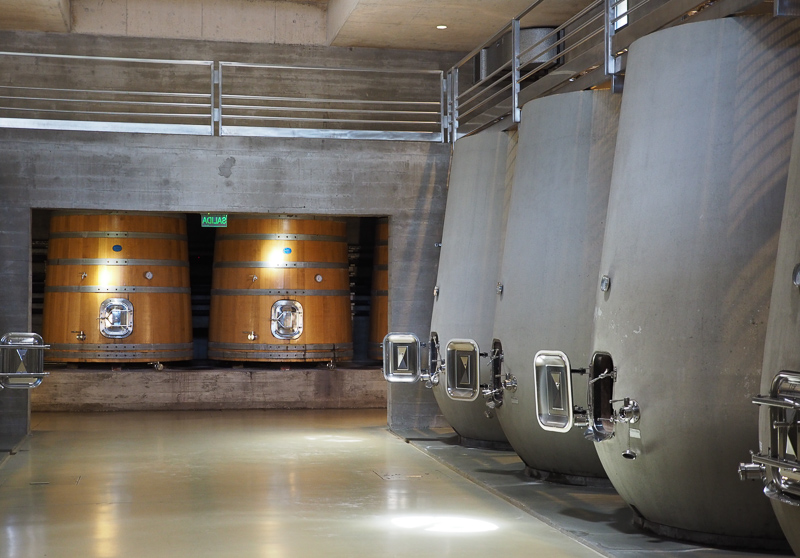
Harvest starts at the end of January and goes on until April. There is rainfall during the growing season, but the drainage is good so this isn’t too much of a problem. During the summer it can get hot, so they need irrigation in warmer parts of the season, and they need to net against the birds. There are a lot of animals here, which can cause problems.
Vine spacing is 2 x 1 which is 5000 plants a hectare. They aren’t organic, but aim to be sustainable. The rainfall during the season makes organics hard.
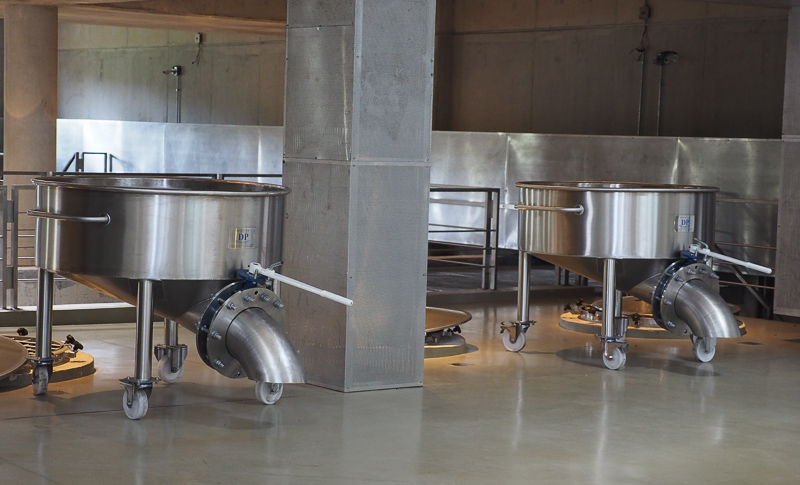
In the winery, they don’t like too much oak. There is plenty of concrete, some big botti and even some terracotta. They have started to make a new style of tannat with no oak, and it has been a big success. In the past Urugauy’s Tannats were frequently big, tannic and oaky, and they needed cellaring for a long time. But with wineries like Garzon taking a different approach, Tannat has been changing in style in Uruguay in recent years.
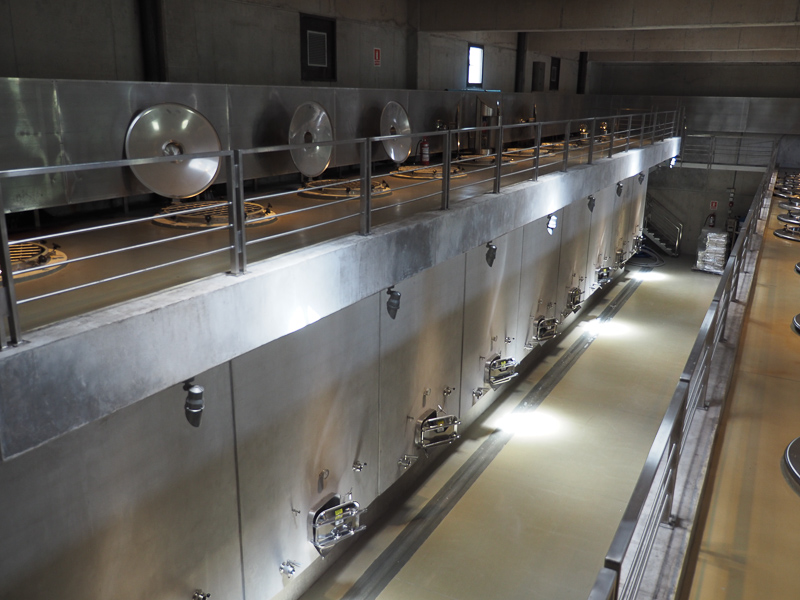
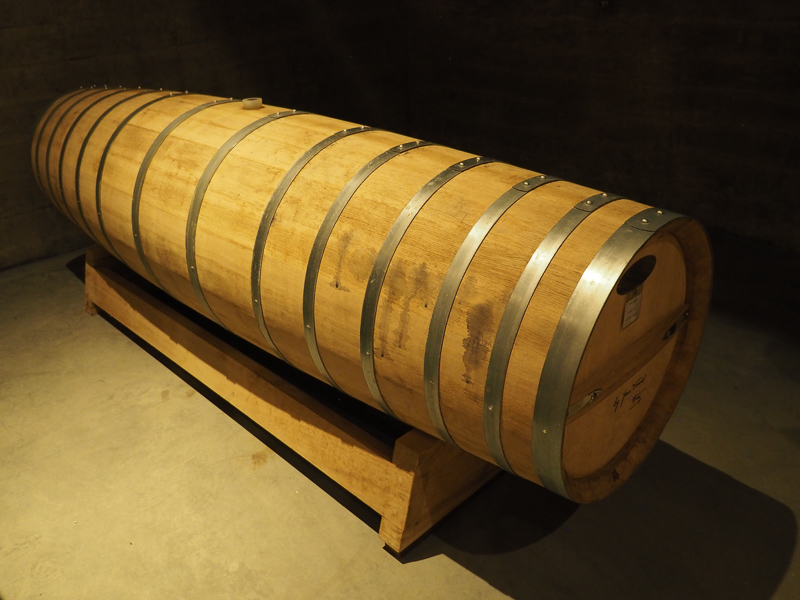
‘In the past, what we were doing was trying to emulate the Mendoza style,’ says Bonino. ‘We made a lot of pumpovers and a long fermentation process, but the thing we didn’t have was the grapes from Mendoza. The quality of the grape and the ripeness of the seeds and skins is totally different here.’ He says that as soon as they began to respect their terroir in Uruguay, and stopped emulating other styles, then they began to understand how to work with Tannat. ‘In the past, to drink a Tannat, you’d need a big piece of meat, or wait for 15 years,’ he said. ‘But now you can drink a young Tannat, and you enjoy it. First of all we changed our minds.’
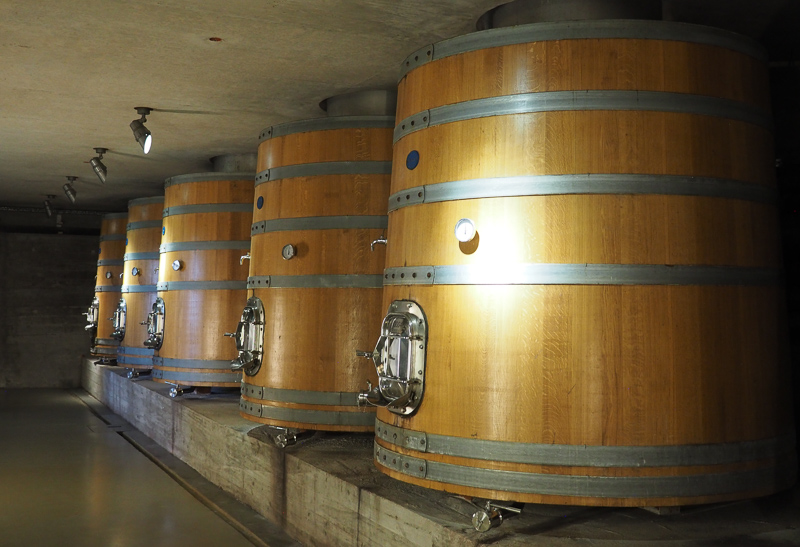
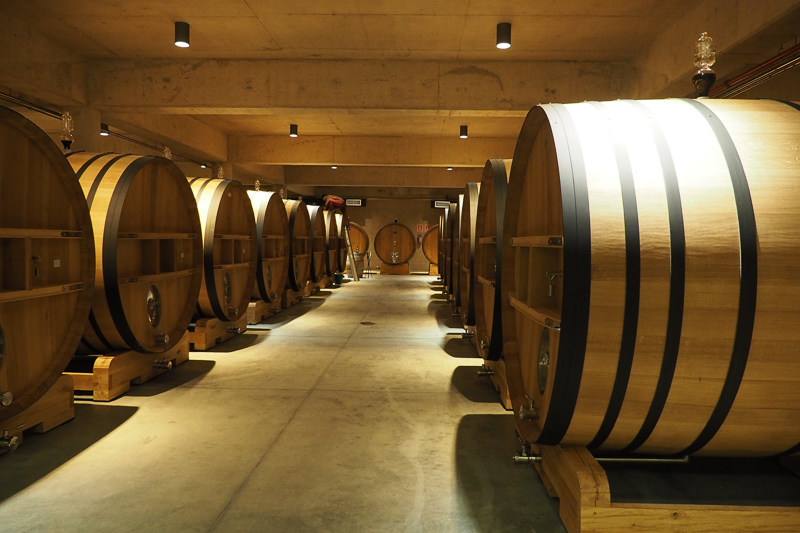
Uruguay is an important market, but this business is planned for export. Garzon represents 35% of Uruguay’s exports. In 2011 they had their first big vintage. Then they suddenly had a lot of wine to sell, without an established route to market or brand. ‘We had a lot of wine but no sales,’ says Bruzzone. In 2012 they had 800 000 kilos of grapes, for example. That makes a lot of wine. Christian Wylie arrived here in 2016 as managing director and faced a big job selling all the wine. Now they are making 6 million dollars in sales. Average case price is 66 per case, which is three times the average for Uruguay. The whole country is only 6000 hectares, so it can’t compete with Chile or Argentina. Uruguay as a whole needs to take a more premium approach, and that’s what Garzón are doing.

THE WINES
The range is broken into four tiers;
- Estate
- Reserve
- Single Vineyard
- Then the iconic wines
Bodega Garzón Estate Viognier 2019 Maldonado, Uruguay
12.5% alcohol. Have 7.4 ha of Viognier, and it grows well here. Harvested early, picked at the beginning of February. Bright, primary and very fruity with nice direct pear fruit, and a slight hint of peach. Quite sophisticated with nice fruitiness. This is 100% stainless steel, with three or four months on the lees to add some texture. Give it some time in bottle to build some more varietal character? Still very primary. 89/100 (£14)
Bodega Garzón Reserve Albariño 2019 Maldonado, Uruguay
Planted in 6 different plots, this is a focus for the winery. Stainless steel and concrete. Granite soils and ocean influence made them thing this was a good bet for this vineyard. Complex, broad and quite textural with a slight pithiness under the sweet apricot fruit, with a bit of grapefruit character as well. Has keen acidity. Very fruity lovely intensity on the palate. 91/100 (£17)

Bodega Garzón Single Vineyard Albariño 2019 Maldonado, Uruguay
80% fermented in concrete tulips, 20% in barrel. Rich, peachy and textured with a salty edge to the fruit, some almond, a touch of apricot, finishing with keen lemony acidity. Lovely intensity here with a twist of bitterness on the finish. Lots of dimensions here. 93/100 (£30)
Bodega Garzón Petit Clos Albariño 2019 Maldonado, Uruguay
3000 bottles, harvested during the night and fermented in cement tanks and the 600 litre Vicard cigar barrel. Concentrated and sophisticated with nice acidity sitting under mineral-laced, saline pear and apricot fruit. It’s dense and quite taut with all the flavours in line: give it a while to open out. There’s a lovely depth and harmony here. Super stuff. 94/100 (£60-ish but not sold in the UK yet)
Altos de José Ignacio Reserve Albariño 2019 Uruguay
This is from Bodega Brisas, which is under the same ownership (imported by Bibendum in the UK). Lovely precision here: bright and saline with lovely depth and freshness. Has a spicy, saline minerality supporting the fresh citrus and apricot fruit. Nice precision to this wine. 92/100
Bodega Garzón Pinot Noir Rosé Estate 2019 Maldonado, Uruguay
Stainless steel fermented. 13% alcohol. Light pink/onion skin in colour. Fresh with a slight creaminess to the pear and strawberry fruit. Very fresh and quite dry with nice texture. Has ripeness with texture and it’s very appealing. Sophisticated and assured. 89/100
Bodega Garzón Pinot Noir Single Vineyard 2018 Maldonado, Uruguay
Fermented in 8000 litre cement tanks, then aged in oak for 12-18 months. It’s not easy growing it here. For us it is a huge challenge. Pinot is Pinot, says Germán. It depends a lot on the year. Sweet and textured with soft strawberry and cherry fruit. There’s a nice fine spiciness under the sweet fruit. Quite soft and has some elegance: not forced at all. Has a little savouriness, too. Lots to like here. 91/100 (£30)
Bodega Garzón Marselan Reserve 2018 Maldonado, Uruguay
Fermented in large concrete tanks. 14.5% alcohol. Has depth and richness, and also a little minty freshness. Ripe berry fruit with nice sweet, easy fruit. Good concentration with some tannic structure, this is a joyful wine with just a hint of seriousness. Fruit all the way. 90/100

Bodega Garzón Tannat Reserve 2018 Maldonado, Uruguay
14.5% alcohol. Floral and appealing on the nose with a supple green edge to the appealing blackberry fruit, with some nice cherry overtones. There’s lovely freshness here with a floral edge. Supple, sweetly fruited and very pure with lovely drinkability. 91/100
Bodega Garzón Tannat Single Vineyard 2018 Maldonado, Uruguay
14.5% alcohol. Fermented in 8000 litre concrete then aged in barrel and cask. Good concentration here. Quite chunky with good tannins, but also lovely polish with sweet black cherry and blackberry fruit. There’s an appealing sappiness with some green hints under the lush fruit. Very stylish with lovely ripe fruit. 92/100
Bodega Garzón Tannat Petit Clos Block #212 2018 Maldonado, Uruguay
14.5% alcohol. Fermented in 8000 litre concrete tanks and then aged in barrel and cask for a year. Ripe, lush, rounded and seamless with sweet cherry and berry fruits, some fine green notes, and a hint of oak. It’s luxurious and broad with softness and smoothness. A very polished wine with a fine spiciness. This has really been tamed. 92/100
Bodega Garzón Petit Verdot Single Vineyard 2018 Maldonado, Uruguay
14.5% alcohol. Concentrated and fresh with lovely bright blackberry and blackcurrant fruit. Has a floral edge and nice integrated green notes. Fresh, juicy and fine with great precision and good acid line, as well as some structure on the finish. 93/100
Bodega Garzón Petit Clos Cabernet Franc Block #560 2017 Maldonado, Uruguay
This is superb. There’s a freshness and brightness here, with gravelly undertones, hints of chalk, and some green notes, as well as fresh blackcurrant and black cherry fruit. Finishes with some grippy structure. Has a slight salinity on the finish. There’s a nice tension between the sweet fruit and the structure, and it should age really nicely. 94/100
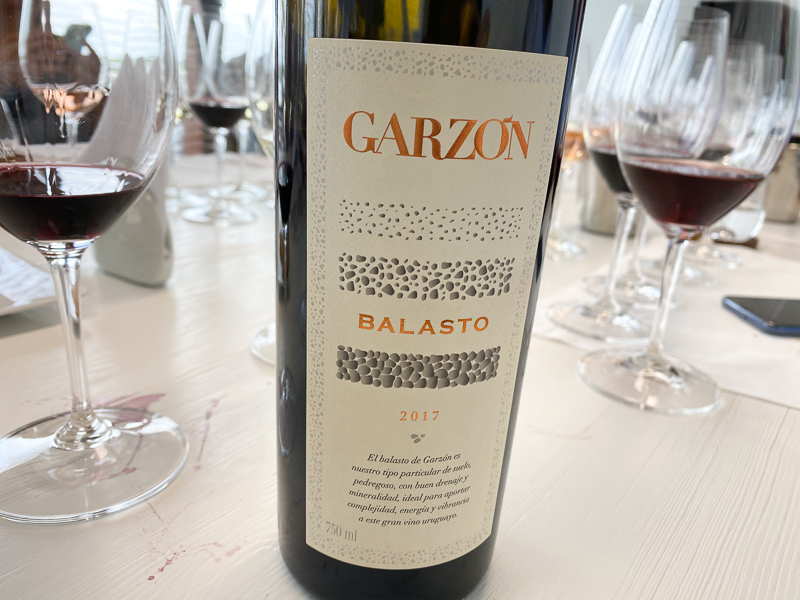
Bodega Garzón Balasto 2017 Maldonado, Uruguay
The first wine from Uruguay available in La Place in Bordeaux. This is the third release and the blend is 50% Tannat, 40% Cabernet Franc, 5% Merlot, 5% Marselan. 14% alcohol. Fermented in concrete tulips and then aged 20 months in 2500 and 5000 litre foudres. Named after the decomposed granitic soils of the vineyard. This is concentrated and fresh, combining supple sweet blackcurrant and black cherry fruit with firm structure, showing lots of fine-grained tannins. Polished, ripe and modern, but it has amazing structure and purity. Lovely wine with a bright future ahead. 95/100 (£110)
Find these wines with wine-searcher.com

